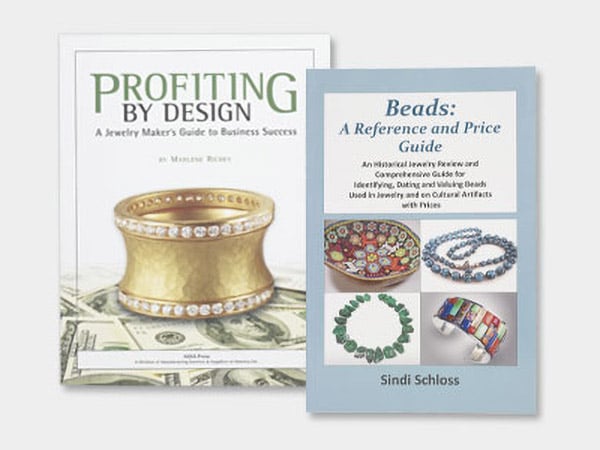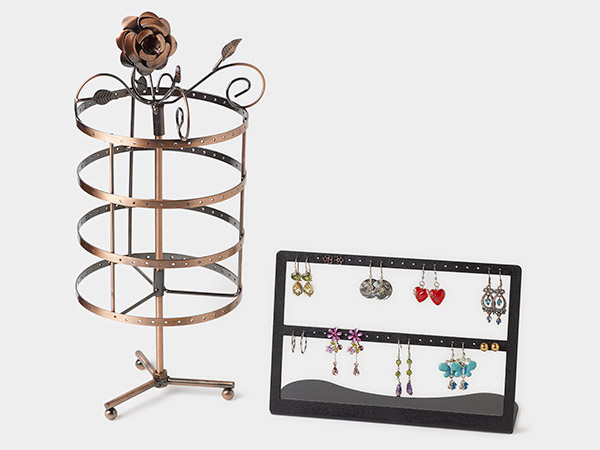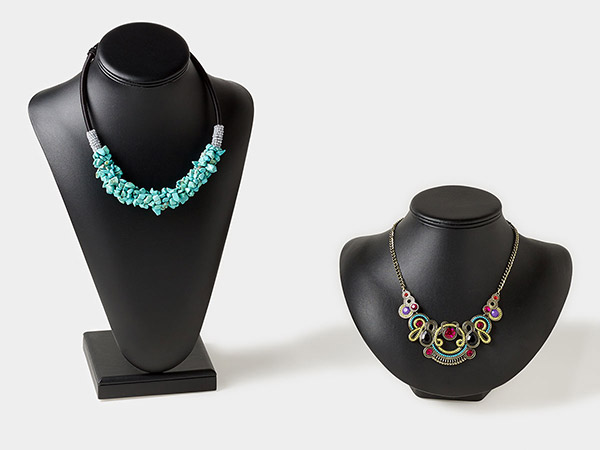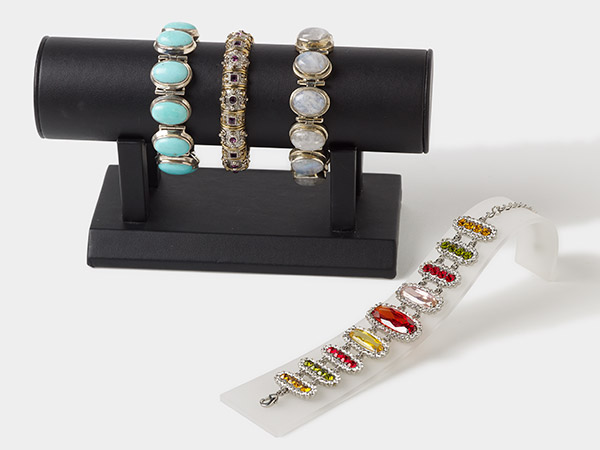To Copyright or Trademark That is the Question
by Daniel Grant
You may see Bob Timberlake, the 82 year-old artist in Lexington, North Carolina, only as a painter of mostly rural imagery (house in the woods, wicker chair in front of hydrangeas, house surrounded by a snowy field, picked strawberries in a basket, house on an island), but he also is a brand. His name is trademarked, as is his signature and an image of a quill, to identify a variety of products that he has designed or with which he is associated. There is bedroom furniture, living room furniture, dining room furniture, kitchen furniture, picture frames; wall decor items; namely, signs, and plaques; mirrors and pillows, colognes and perfumes, dinnerware, decorative pottery, stoneware, and enamelware, namely plates, cups, bowls, platters, teapots, pitchers, ceiling fans, electric lighting fixtures, fabric for upholstery, curtains, and clothing, house paints and wood stains. "There are close to a dozen trademarks," said his son, Dan Timberlake, a lawyer and advisor to his father.
What is a Trademark?
Perhaps, we need to step back a moment to define the term. Trademarks are words, logos or images (for instance, Jolly Green Giant, Aunt Jemima, Betty Crocker or Mickey Mouse) that specifically symbolize, or refer, to a company's products and services. They always are used in a commercial context, although some artists have incorporated their designs into usable items, such as Keith Haring's radioactive babies on t-shirts, magnets, stationery and baseball caps (pop-shop.com) or Donald Judd's home furnishings (juddfoundation.org/artist/furniture/). Other artists, including Banksy, Jean-Michel Basquiat, Dale Chihuly, Norman Rockwell, and Andy Warhol, also are represented by merchandise that is protected by trademarks.
The Difference Between Copyright and Trademark
Both copyright and trademark help protect artists from others who may attempt to pass off their work as that of the artists. The trademark blocks the other party from passing off counterfeit objects as those of the artist, while copyright protects the artist from the redistribution of the counterfeit items themselves. According to Tristan C. Robinson, a lawyer in Woodlands, Texas, either or both forms of intellectual property protection "can ensure that the public trust is maintained and that the product is from the artist we want it to be. To wit, I'm much more likely to buy someone's artwork if I have a deep respect for the artist and I know I won't be getting anything bogus or counterfeit."
Certain marks can be both copyrighted and trademarked where there is a distinct design element. A thumbnail self-portrait of Andy Warhol along with his signature (blog.warholfoundation.org/) both have been copyrighted and trademarked, but certain written terms – Warhol Factory and Silver Factory, for instance – only have been trademarked.
THE DEFINITIONS OF TRADEMARK AND COPYRIGHT
(definitions provided from dictionary.com)
Trademark: Any name, symbol, figure, letter, word or mark adopted and used by a manufacturer or merchant in order to designate specific goods and to distinguish them from those manufactured or sold by others.
- A trademark blocks the other party from passing off counterfeit objects as those of the artist
Copyright: The exclusive right to make copies, license and otherwise exploit a literary, musical, or artistic work, whether printed, audio, video, etc.
- A copyright protects the artist from the redistribution of the counterfeit items themselves
Using Trademarked Media
We usually do not think about artists having non-art items to sell or having a trademark to protect. More often, a commercial enterprise, such as Walt Disney or Lego, bringing lawsuits against artists who use their trademarked (and copyrighted) images and other marks in their fine artwork. Sometimes, these companies win and other times they do not. Artists using Lego building blocks Mattel Barbies often have won, as has Tom Forsythe, a photographer in Utah who, in 1997, began to create a series of 78 images called "Food Chain Barbie" in which undressed Barbie dolls were depicted in a wide range of surreal – in a blender ("Malted Barbie"), in a fondue pot ("Fondue a la Barbie") or wrapped in a tortilla with salsa on top ("Barbie Enchiladas") – and sometimes sexualized, positions. When, in 1999, toy company Mattel brought a lawsuit, charging copyright and trademark infringement, against the artist, Forsythe claimed in court papers that his work represented a critique of "the conventional beauty myth and the societal acceptance of women as objects because this is what Barbie embodies." It took two courts and four years, but Forsythe was found to have produced parody ("However one may feel about his message – whether he is wrong or right, whether his methods are powerful or banal – his photographs parody Barbie and everything Mattel's doll has come to signify," the Appeals Court ruled in 2003), which is a protected "fair use" under the U.S. Copyright Law, and did not diminish the value of the Barbie doll for consumers. Additionally, Mattel's demands and lawsuits were found by the appellate court to be "groundless and unreasonable," obligating the company to pay the defendant's legal fees and court costs.
Get the Best Protection for Your Logo
Bob Timberlake's trademarks have been the subject of lawsuits, not so much in stopping others from infringing on his marks but when other manufacturers have sought to stop him from trademarking a name that is close to theirs. Timberlake Cabinetry, a division of American Woodmark Corporation, sought to prevent Bob Timberlake from registering his name in similar products that might compete in the market, and Timberland, a manufacturer of outdoor clothes, shoes and accessories, also tried to block the artist from registering his name even though the two companies did not compete. "They both lost," Dan Timberlake said, adding that the two lawsuits cost the artist between $250,000 and $300,000.
At times, different companies may hold almost identical logos, such as the red star logo of Converse tennis shoes, Heineken beer, and Texaco gasoline, but still are permitted to register their logos since the businesses are not competing. On the other hand, "familiar symbols and designs," such as a smiley face or image of George Washington, "cannot be registered either at the copyright or trademark offices," said New York City lawyer Robert W. Clarides. "Those applications would be bounced."
How To Register
One registers a copyright application with the U.S. Copyright Office (www.copyright.gov/registration/), a process that takes a period of months and costs between $35 and $55, depending upon if the image being registered has one author, if the author is also the owner and if one is registering a single work or a collection. In order to receive a copyright, "the first threshold for an artist to overcome is to show the logo contains copyrightable artwork," such as a distinctive image, said Washington, D.C. Lawyer Joshua Kaufman. Michel Basquiat included a crown image atop his signature on many of his artworks, which also reappears on his merchandise. Trademarks, on the other hand, are registered with the United States Patent and Trademark Office (www.uspto.gov) and the cost of filing is $225. Kaufman noted that "most artists may or may not realize it but their signature or their name is probably a trademark when they put it on their artwork and put their artwork into commerce."
The process of trademark registration also takes months, as the trademark examiner (a lawyer assigned to look at the proposed logo or mark) will determine if there are any issues with the proposed mark, such as it is not distinct enough or is too close to another trademark. If there are any concerns, an "office action" is issued, requiring the applicant to respond to each of the issues that are raised. If there are no issues, or if the applicant responds to the issues to the examiner's satisfaction, then the mark becomes "Published for Opposition," which is simply a period of time in which anyone who feels the applicant's proposed mark may violate his or her rights can file an opposition to your mark's registration. Assuming all goes well throughout this roughly six-eight months on average period, the trademark becomes registered.
Legal Protection for Your Logo
Both the copyright and trademark of a logo can be protected through the legal system, although the process and outcomes are somewhat different. One needs to register a copyright in advance of filing a lawsuit and, for greater dollar penalties, in advance of an infringement itself, while a trademark infringement lawsuit may be filed without registering the mark. A proven case of copyright infringement also comes with monetary damages mandated under the federal statute, while the normal outcome of a trademark infringement action is a court-ordered injunction to stop further infringement. Robinson noted that "although monetary awards are rare, they have been found to be appropriate in cases where the owner of the Mark can show that the infringer unjustly enriched themselves or that the owner suffered actual economic losses." Artists whose images and trademarks both have been infringed may file lawsuits under both copyright and trademark law.
Some artists have placed identifying logos on their works, such as the letters A over D inside a circle on the engravings of Renaissance artist Albrecht Durer or the similar combination of the letters H, T and L within a circle in the work of Henri de Toulouse-Lautrec on his lithographs, and Jean-Michel Basquiat had included an image of a crown above his signature. In general, however, most artists seek to be associated in the public's mind through their style and imagery rather than with a logo.
"A trademark creates the presumption that you have a brand, that the government believes your work is distinctive enough to merit a trademark," said Christine Rafin, an intellectual property lawyer in New York City. However, she noted that the use of a trademark, largely for licensing, is appropriate primarily "for artists when they have become successful."
TO SEE TRADEMARKS FROM POPULAR ARTIST'S, CHECK OUT THE LINKS BELOW
- Banksy
trademarks.justia.com/851/98/banksy-85198175.html - Jean-Michel Basquiat
trademarks.justia.com/769/78/jean-michel-76978977.html - Dale Chihuly
trademarks.justia.com/852/77/chihuly-85277584.html - Norman Rockwell
trademarks.justia.com/852/33/norman-85233672.html - Andy Warhol
trademarks.justia.com/786/28/andy-78628056.html
Use of Logos by Artists in Their Work
Corporate logos and other marks regularly appear in the work of many artists. An artist sets up an easel at Times Square in New York City and paints a picture. That image is likely to contain billboard advertising, automobile logos and any number of products. And, more in the category of Tom Forsythe, some artists use trademarks, such as those of Starbucks, Exxon or Walmart, for instance, in order to critique corporations and consumer culture. Artists may well ask, am I exercising my right to free expression or getting a free ride from some trademark holder's logo and reputation?
The legal test for trademark infringement is what the "ordinary person" is likely to believe, and there is no rule of thumb concerning how much of the image may be taken up by the trademark before an artist is apt to lose an infringement lawsuit. "Is the trademark an incidental use as part of the scenery or so prominent that someone might think the trademark owner had something to do with the picture?" said William M. Borshard, a New York City trademark lawyer. "The principles of these laws are clear and easy to state, but the application of those principles to fact is not at all so clear."
Borshard added that difficulty in knowing in advance what may be deemed trademark infringement is compounded by the fact that judges generally have different beliefs as to how much protection a trademark deserves. "On one side, there is the view that trademarks help consumers distinguish between products, which is helpful in our free enterprise economy," he said. "The other view is that trademarks are anti-competitive, in that they cause consumers to behave irrationally, selecting one product over another when both are identical. Judges take one side or another on the issue of trademark. The 'ordinary person' turns out to be the judge, and you don't know what kind of judge you'll get on any given day."
Resources for Obtaining Logo Protection
Trademark: www.uspto.gov
Copyright: www.copyright.gov/registration/
Have a question regarding this resource? Email Customer Service.
Copyright Permissions
All works of authorship (articles, videos, tutorials and other creative works) are from the Fire Mountain Gems and Beads® Collection, and permission to copy is granted for non-commercial educational purposes only. All other reproduction requires written permission. For more information, please email copyrightpermission@firemtn.com.





